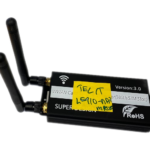
Howto: Configure Telit Modem on Linux
August 15, 2022
No more plug-in SIM card on the Apple iPhone 14, why did they remove it and what impacts does it have?
September 8, 2022
Many people are wondering what is IoT? In this article we look at some of the points and different aspects of IoT. Especially when selecting a Global IoT ecosystem, there are many attributes to consider ranging from cost, technology, SIM card type-form factor, infrastructure and the total solution from end-to-end. There are many advantages and drawbacks to consider for your business implementation when determining the most efficient, customer friendly and yielding the most cost effective results. IoT solutions can increase your business, save your company money, and give you better visibility into your products and services.
SIM/eSIM Form Factors
First, let’s start with the most common SIM form factors that can be found in the IoT ecosystem:
1FF = ID1 / Full Size
2FF = Mini SIM
3FF = Micro SIM
4FF = Nano SIMS
MFF2 = Embedded / soldered Form Factor

*Image from LinkedIn-SIM cards demystified
The first (full size) SIM cards were initially created as a piece of plastic roughly the size of a credit card. They have continued to shrink to the size of a postage stamp (a nano SIM) and have become quite small. The real-estate on a mobile phone is extremely valuable and the device makers such as Apple and Samsung want to use all the space to things like larger battery, cpu or memory. On the other hand, an MFF2 card is embedded into a circuit board directly, which means that it cannot be easily removed and the profile has to be able to be managed Over-The-Air hence creating the need for eSIM technology (see article eSIM terminlogy explained). With a traditional SIM card, you must obtain a new SIM card to change the primary provider network (non-roaming), therefore an eSIM offers the ease of switching network providers seamlessly. An roaming eSIM also affords you the opportunity to offer connectivity from multiple network providers allowing for carrier failover and ability to obtain best in market pricing.
Network Capability
Just as the SIM card has changed, network technology has also evolved from 2G, to 3G, 4G/LTE, 5G and 6G in emerging markets. While 2G bandwidth is slower, the necessary hardware can be cheaper. However, technology always advances to the point where older technology becomes obsolete and is no longer supported. For example, Wireless carriers phased out 2G networks in the United States, and 2G and 3G will no longer be supported worldwide between 2025 to 2033. Simplex Wireless offers a single SIM/eSIM solution that provide coverage to 187+ countries, 500+ networks with access to 2G, 3G, 4G, CAT-M and NB-IoT networks where available. There are a variety of communication protocols beyond cellular that may fit or complement your IoT implementation. Protocols such as Wi-Fi, LoRa/LoRaWAN, LWM2M and BLE may be of use and should be investigated.
Advanced IP routing
When you are designing your solutions, it is also good to look at the IP-network side of things. With this I mean what happens to your data once it leaves the cellular network and goes to the general internet. Your IoT solution may have needs for things like Policy Control (where is the data allowed to go), Private VPN tunnels, Location Based Services or Local Breakout (which country your data orginates from). Thse can be address with SDWAN solutions may be needed in your implementation to provide for security, better speed, increase application performance and locale controls.
Hardware Selection
There are many options to meet your needs in the modem and chipset space. Is your decision based on budget? If it is, do not be short sited in your selection process. Have you thought of the lifecycle of your device? This can be impacted by your hardware selection – i.e. A 2G module may meet your price point but may be sunset in a year or two and the sensor you defined has a lifecycle of 5 years. Does the hardware provide for dual-SIM or eSIM support? This may be needed if your devices is going in an area that has limited coverage or needs backup support.
Contracts
If you have multiple IoT SIMs with various carriers, managing assorted contracts can be a headache – numerous invoices and network partners, increased accounts payable office and administrative work, and managing all the assets can be extremely time consuming. Most carriers require that a minimum commitment on SIM volumes and usage of SIMs. So looking for a connectivity provider offering no minimum spend and no long term commitments provides you the ability to grow without being concerned with the added expense. Look for global IoT SIM providers that can cover many countries with multiple networks with one single SIM card or even better can extend this coverage with eSIM support. This reduces your complexity for billing and allows you to focus on your business.
Reporting
Lastly, a dashboard with unified SIM management view is essential when investigating IoT solutions. Simplex Wireless offers a one-stop shop to manage all your IoT assets in one place under one agreement. For example, if you have a fleet of trucks but may possibly have more shipments than resources, knowing that you have assets available gives you just-in-time fulfillment. This equates to maximizing existing trucks without additional costs for headcount or trucks, can streamline your operations for more efficiency, and can update your operations processes as it is completely automated. Additionally a modern portal such as the Simplex dashboard allows a single pane view for all your existing or legacy SIM card under one view. Simplex Portal supports today over 100 carriers that can be easily managed from a single portal.
We are passionate about IoT connectivity, best practices and keeping it simple.
Tasso Kefalas, CEO
https://www.linkedin.com/in/tasso-kefalas/
Make it Simplex!


